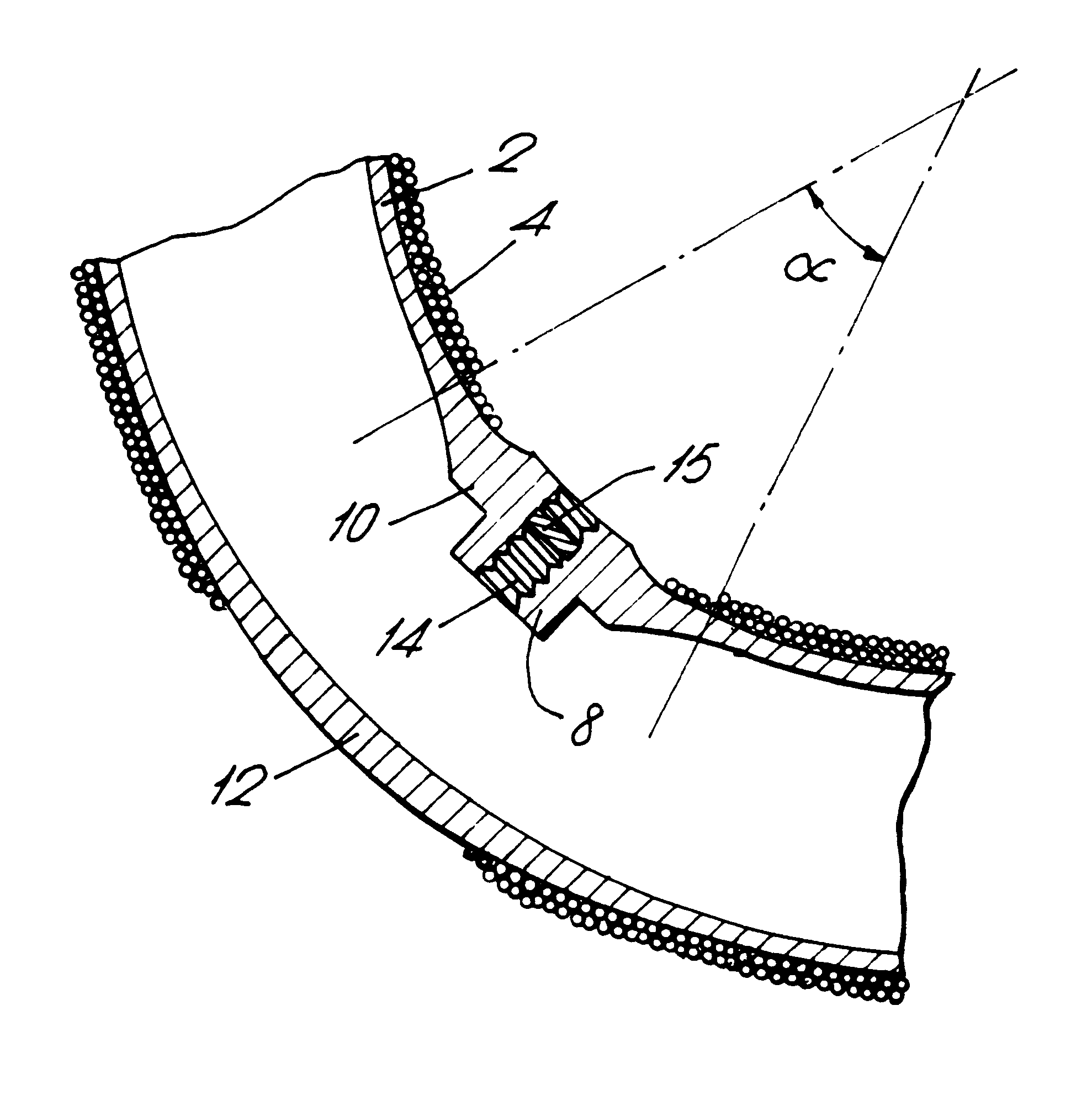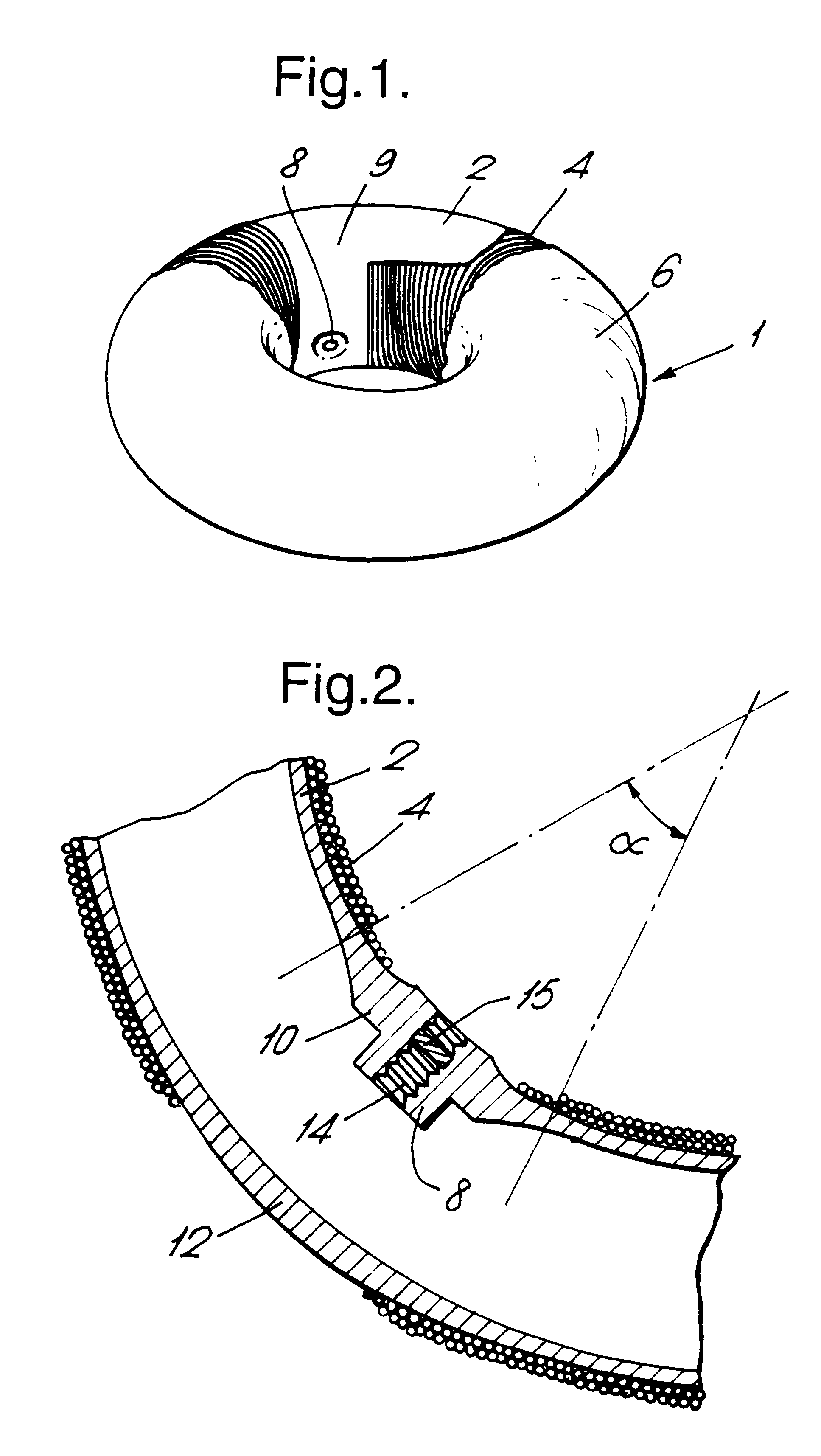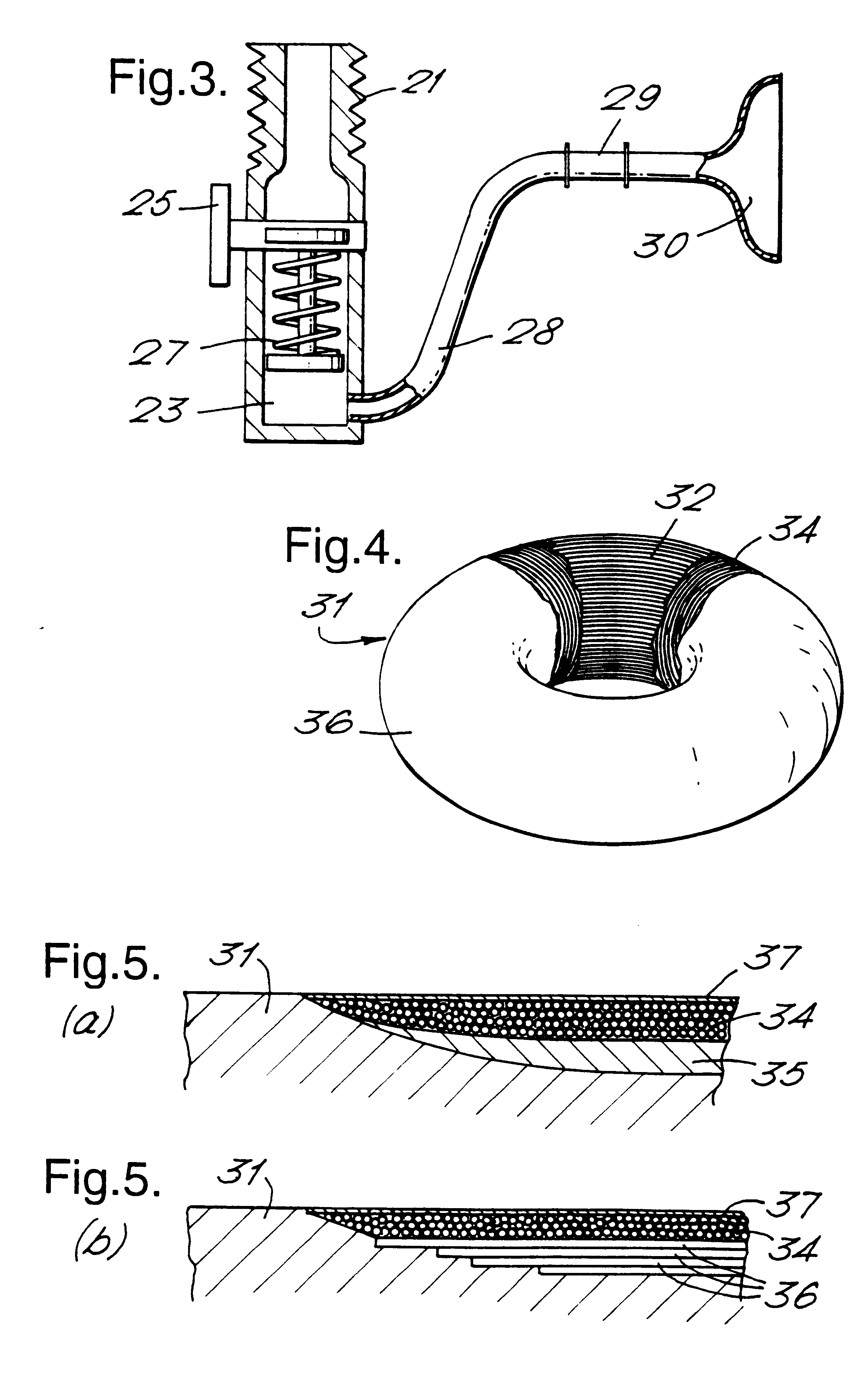Gas containment apparatus
a gas containment and gas technology, applied in the direction of respirator, vessel construction details, transportation and packaging, etc., can solve the problems of complex manufacturing, difficult to ensure complete wetting of fibres by matrix resin, incomplete wetting of fibres forming weak zones in conventional resin,
- Summary
- Abstract
- Description
- Claims
- Application Information
AI Technical Summary
Benefits of technology
Problems solved by technology
Method used
Image
Examples
Embodiment Construction
FIG. 1 illustrates a toroidal gas tank for a breathing apparatus according to the invention, provided with detachable supply apparatus and with the apparatus disconnected. A toroidal inner tank 2 having a nine litre capacity and a design pressure of 207 bar (21.1 Mpa) is fabricated from 6061 aluminium alloy, conveniently from two curved "gutters" welded together. The tank 2 is of circular meridianal and transverse section with a total diameter of 400 mm and an inner hole diameter of 128 mm. The tank 2 may, for example, be fabricated from two curved gutters welded together. The wall of the torus has a constant basic wall thickness of 6.5 mm. The tank 2 is overwound with Kevlar-49.TM. fibre 4 to an overwound layer thickness of 2.5 mm measured on the inside of the torus (this will correspond to a lesser thickness on the outside of the torus as a consequence of the build-up effect inherent in the toroidal geometry which was noted above), except for a small section of the casing 9 which ...
PUM
| Property | Measurement | Unit |
|---|---|---|
| pressure | aaaaa | aaaaa |
| diameter | aaaaa | aaaaa |
| diameter | aaaaa | aaaaa |
Abstract
Description
Claims
Application Information
 Login to View More
Login to View More - R&D
- Intellectual Property
- Life Sciences
- Materials
- Tech Scout
- Unparalleled Data Quality
- Higher Quality Content
- 60% Fewer Hallucinations
Browse by: Latest US Patents, China's latest patents, Technical Efficacy Thesaurus, Application Domain, Technology Topic, Popular Technical Reports.
© 2025 PatSnap. All rights reserved.Legal|Privacy policy|Modern Slavery Act Transparency Statement|Sitemap|About US| Contact US: help@patsnap.com



